Anna Carreras i Mireia Campuzano
The exhibition Barcelona: City of Artistic Miracles, for which the Museu Nacional loaned about 60 works, ended its tour of Japan suddenly at the end of March, due to the impact of COVID-19. Even so, the exhibition was very well received by the public.
Organized by the Nagasaki Prefectural Art Museum and Kobe Shimbun media group, the exhibition focused on the splendour and artistic richness of Modernista Barcelona, and the Museu Nacional was one of the main collaborators.
After visiting several Japanese cities – Nagasaki, Himeji, Sapporo and Shizuoka – the exhibition was a huge success in the capital, Tokyo, at the Tokyo Station Gallery, despite the state of excitement the city was in because of the Olympic Games (postponed until the summer of 2021).
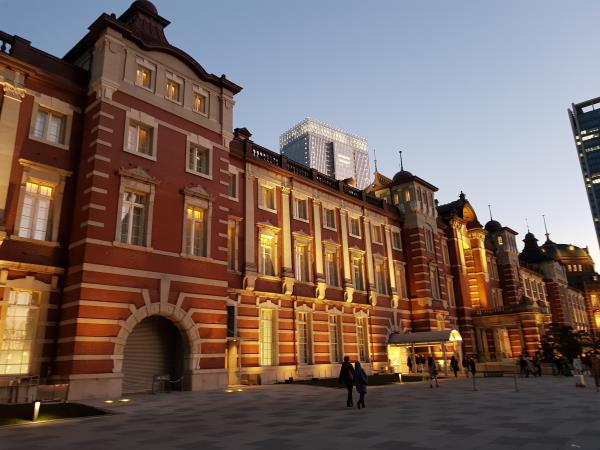
As you might imagine, paintings by Ramon Casas, Santiago Rusiñol, Joaquim Mir and Carles Casagemas, among others, were loaned. Sculpture was represented, for example, by Juli González, Pablo Gargallo and the recently restored bronze figure Bust of a Noblewoman Representing Barcelona by Eusebi Arnau, which at some of the venues was placed at the entrance to the exhibition, as a symbol of the city. However, in Tokyo, objets d’art stood out especially, concentrated together on the same floor, with furniture by Antoni Gaudí and Gaspar Homar, glazed ceramics, lights, a hydraulic floor by Lluís Domènech i Muntaner made up of 104 tiles, jewellery by Lluís Masriera, and the splendid, extremely delicate stained-glass work Virgin Mary as a Child, by Joaquim Mir. With respect to graphic work on paper, fewer works were loaned due to its vulnerability to the light.
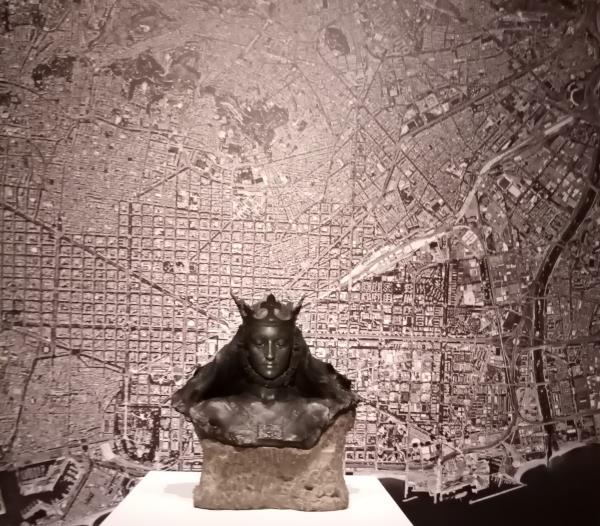
Tokyo Station Gallery
Tokyo Station Gallery is housed inside the Central Railway Station, one of the few emblematic buildings left standing after the Second World War. It was opened in 1914, although the idea of building it raised up in front of the gardens of the Imperial Palace was a project dating from 1899. Since it opened, the station has been renovated on several occasions to adapt it to the city’s new needs: about 3,000 trains a day currently pass through it and it is the terminus for many bullet trains.
The original building materials are terracotta bricks, wood and iron, materials similar to many Catalan Modernista buildings. Despite that, with the successive enlargements, materials characteristic of every period have been used, up to the concrete in many of the most modern areas.
Inside the station, right in the middle, there is a colonnaded round space conceived as a meeting point that connects users with the outside, the metro, the railway platforms and, curiously, with the exhibition rooms.
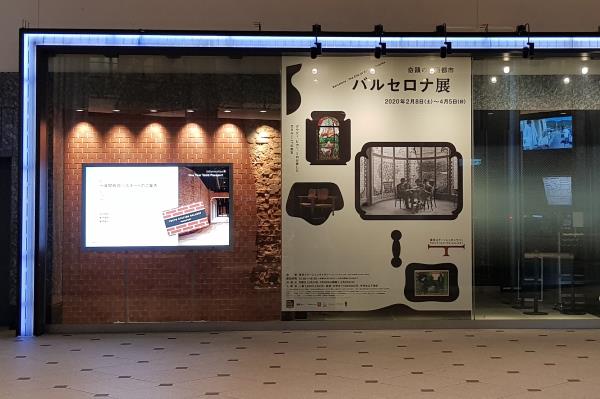
Assembly and installation
The exhibition was on two floors: one of them had plain walls painted white, while the other still had the original terracotta brick walls, highly appreciated by the Japanese for both their aesthetic appearance and their age and history. The fired clay had a very uneven look, with cracked bricks and many areas eroded due to them having been covered over with cement in the past. For practical purposes the museography was complicated, given that no holes could be made in the walls to hang paintings.
The works that had to be hung were in fact suspended on stainless steel cables hanging from metallic guide-rails placed at the top of the walls. The authors of this piece, conservator-restorers at the museum, in charge of the mail, decided to reinforce the large-size paintings with two cables in order to reduce their movement and, what is more, the backs of the pieces were bulked out so that the paintings could be leaned against the wall.
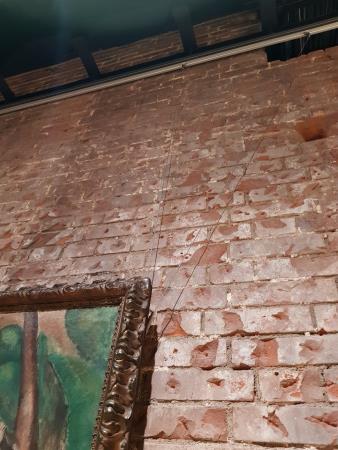
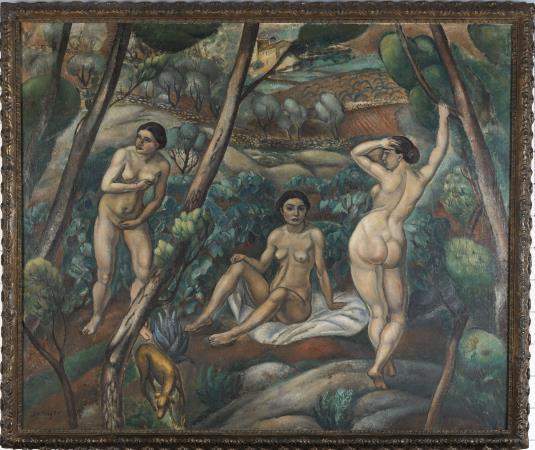
In relation to the possible vibration of the works, special mention should be made considering that Japan is a country with high levels of seismic activity. In this respect, the people at Tokyo Station Gallery took all the preventive measures necessary to avoid any possible damage to the pieces. Good examples of this are the nylon threads with which the porcelain vase by Antoni Serra was bound, a method also used in the other venues.
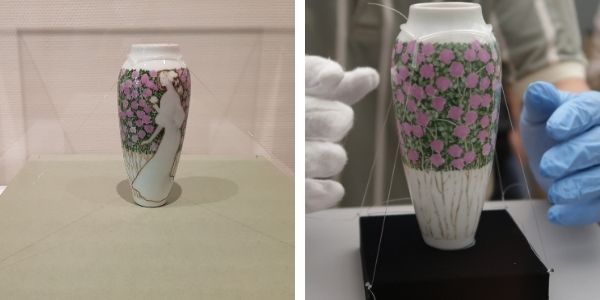
Another clear example is the brackets that secured a door by Gaudí to the wall or the methacrylate containers that held the enamelled ceramics.
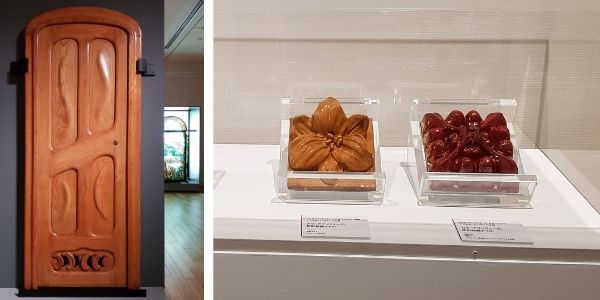
We should also mention the existence of the anti-seismic display cases to mitigate vibration that were used in all the venues; only their design varied. The ones in Tokyo were probably the most neutral, if we compare them to the high-tech display cases that were placed in the venue in Himeji.
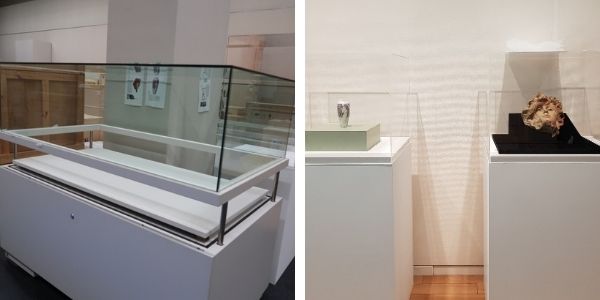
Arigato gozaimasu
From our point of view, in Japan the way they approach the assembly of an exhibition is surprising. They work with small teams doing one specific job, previously agreed at the start of the day, and this way they do not get in each other’s way. They work in silence, discreetly, contemplatively, and above all respectfully and obediently. In relation to the works of art, they show careful and rigorous consideration, and respect for the other workers, demonstrating their appreciation of everybody’s professionalism.
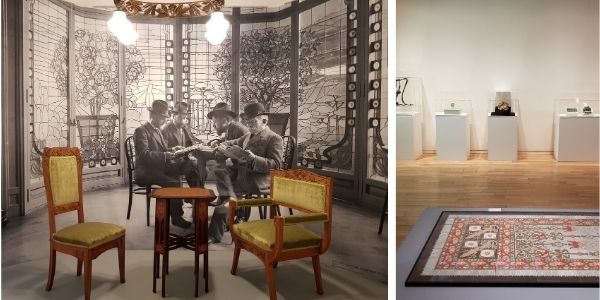
Related links
The artworks that travelled to Japan are now back on display in the museum’s rooms
Mireia Campuzano and
Conservació Preventiva i Restauració







